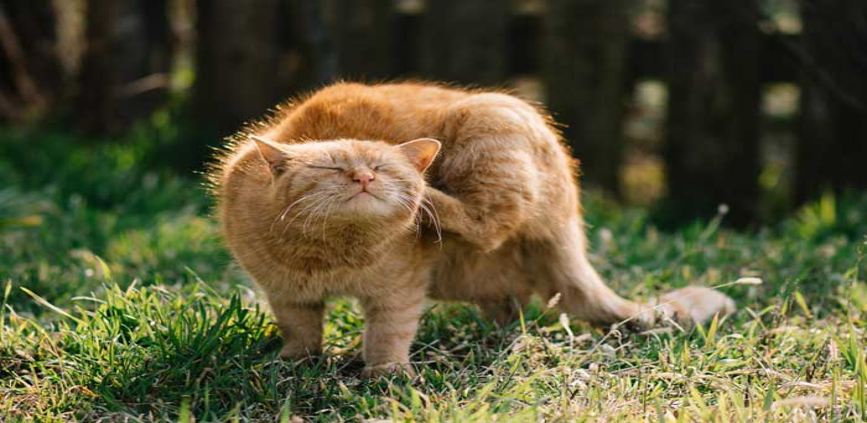The fleas are quite a noticeable problem for both the health and happiness of household pussies.
Indice
Not only do they cause constant itching and irritation, but they are also the cause of serious illnesses. serious diseases that can seriously affect the feline’s life.
For these reasons, cat owners invest their time and money in finding a solution to keep fleas at bay. fleas as far away as possible from their furry friends and their home,
But what happens when all these efforts don’t seem to pay off?
Cómo quitarle las pulgas a un gato
Unfortunately for both the person and the feline, fleas tend to be extremely stubborn and rise from the ashes, evading even the best flea treatments. flea treatments .

How is it possible for a cat to still have fleas after treatment?
Generally, flea treatment is focused solely on the feline, through the use of pipettes The use of fleas, collars, shampoos and pills, although highly effective in eliminating the problem at the time, does not help to solve the root of the problem, which lies in the means used by the fleas to infest the cat.
Flea infestation can occur at any time and in any place, but the real danger is when fleas have taken over every inch of the home and its inhabitants without the person being aware of it.
Detectar si hay huevos de pulgas en gatos
Fleas multiply at an enormous rate, and if the kitty or other infected animal has been in the house, you can be sure there are flea eggs hidden even under your shoes.
The biggest cause of a cat falling victim to fleas again after treatment is due to this, in addition to another factor: the people and other animals it lives with.
As strange as it may seem, humans can also serve as a means of transportation for these animals, which can attach themselves to your clothes, shoes or objects brought in from outside.
Along with this, other animals living in the household with your cat can also become infected or infect your cat, and if these are not treated at the same time, the cycle of transmission will continually repeat itself.
How can it be solved and avoid future re-infestation?
The solution is to attack all these elements at the same time and leave the fleas no chance.
To treat fleas in cats, the best strategy is to apply a flea treatment to both the feline and other animals that may be infected and to every inch of the home.
This is something that requires more time, patience and money, but it is the most effective method to ensure the elimination of fleas, at least from the kitty’s immediate environment.
Home cleaning is extremely important, and the more thorough the better.
Eggs, larvae, pupae and adult fleas can be found anywhere, from the soil, to furniture, plants, fabrics, clothes and ornaments.
The use of vacuum cleaners and flea control products for this purpose, which can be natural or chemical, are the basis for success in this area.
Regarding flea treatment of other household animals, it is essential to note that if they are of different species, each will require a personalized treatment.
It is not recommended at all, for example, to use products specially designed for cats on dogs and vice versa.







